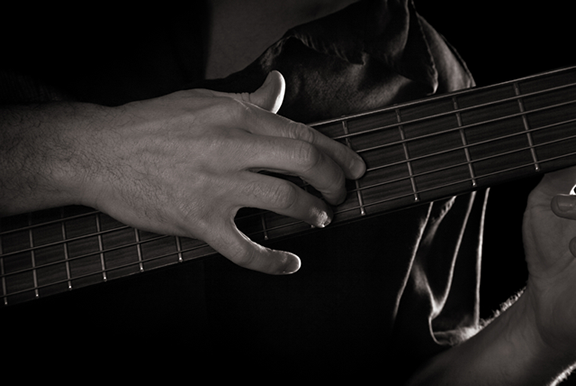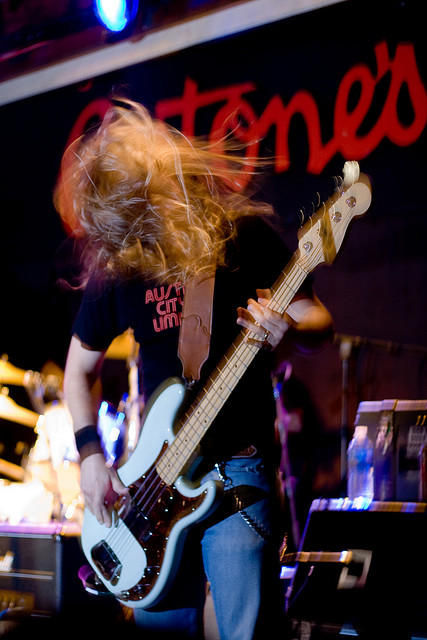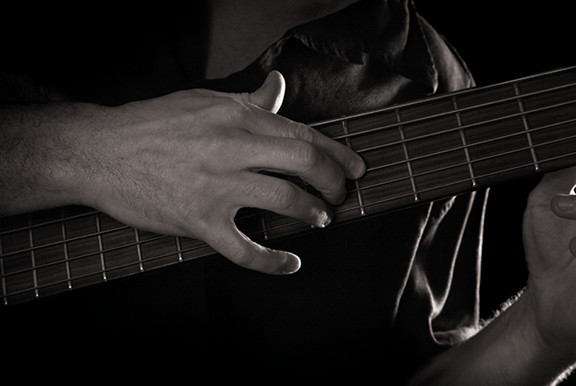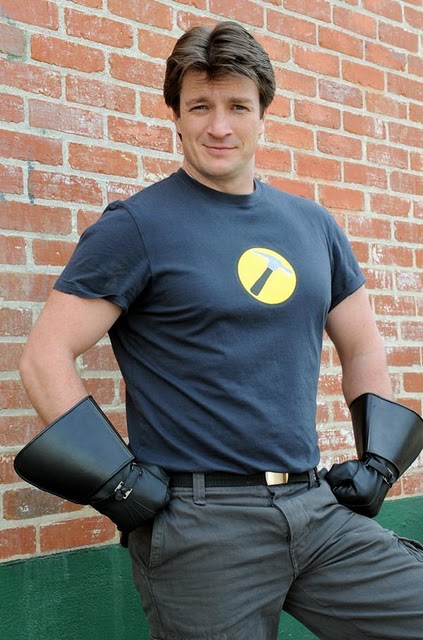Continuing our discussion of how bass playing technique affects the sound of the bass, this week we’re looking at slides and slurs.
Slap bass is all about the right hand getting funky, but what about when the left hand wants to get in on the action?
If you want a fast flurry of notes but your fingers can’t keep up, or you need a super-smooth sound without all the attack of the notes, you need to get legato. Legato is a classical music term for tied-together notes, but to bass players it’s the combination of two techniques: “pull-offs” and “hammer-ons”, which collectively are known as “slurs”.
Pull-offs
To pull-off, you remove the finger fretting the sounding note, so that a lower-pitched note sounds. You need to remove the finger quickly, so that the string continues to ring out, sounding the lower note.
Here a riff is played first normally and then using pull-offs. Listen for the difference it makes!
Hammer-Ons
The companion technique, a hammer-on (or just “hammer”), involves using a finger of the left hand like a hammer to pound down onto the string so that it sounds without being plucked.
Here a riff is played first normally, and then using hammer-ons. Can you hear the difference? How does it compare to the pull-offs in the previous example?
Combining a string of hammer-ons and pull-offs creates a trill: a rapid fluctuation between two notes. Maintaining a fast trill on the bass takes a lot of stamina!
Here a riff is played using trills, combining hammer-ons and pull-offs.
Tapping
You can use a hammer when a note is already sounding, or from silence—in which case it’s called a “hammer from nowhere” or a “left hand tap.” Now, I imagine the smart ones among you will be thinking “A left hand tap? Does that mean there is such a thing as a right hand tap?” Good question, imaginary smart reader. You can also use your right hand to tap out notes.

A basic tapping riff on a single string.
This technique will be familiar to fans of Van Halen’s guitar playing. He uses the technique for the ridiculously fast solos from tracks such as “Eruption,” but it also has its place on the bass. Right-hand taps in conjunction with legato techniques can create some cool, funky riffs, or patterns that sound like a sequenced bass synth.
This advanced tapping riff uses all four strings.
Slides
One of the most fun things you can do on the bass is slide between notes (classically trained musicians know this as a “glissando”, or “gliss”). Play a note and move the fretting finger to another note without relaxing the pressure. You can hear this technique on the iconic intro to “London Calling” by The Clash.
Here the ascending pairs of notes are first played normally, and then using slides to transition from one note to the next.
Slides work brilliantly as intros or links connecting parts of songs. The bass player Gene Simmons of Kiss is a big fan of slides, and uses them at every opportunity. Check out the bass slides at the intro and end of each drop out.
This simple riff uses slides to introduce and link sections.
The sound of a slide is an instant giveaway to whether an electric bass is fretted. A slide on an electric bass reminds me of the Jerry Lee Lewis piano technique of running your finger down the keys. Note though, that such a run on the white keys of a piano will sound the notes of the C major scale (a mix of whole- and half-steps), while on the bass it will be chromatic (all half-steps).

Pulling it all together
Once you’ve mastered slides and slurs, you can mix them together to add interest to your riffs and runs. In this example, I play the same riff with a clean technique, and then with the addition of slides, hammers, and pull offs to add interest. See if you can identify which techniques are used where.
If you think you’ve got it down, try this quiz to test your new skills:
Don’t forget to tell us how you did in the comments below!
Join us next time on Bass Tone for a look at the instrument which bridges the gap between electric and upright bass, and lets you glissando to your heart’s content: the fretless electric. And look out for the next Bass Tone podcast episode later this week, to hear more examples and discussion of how playing techniques can affect the bass sound.









